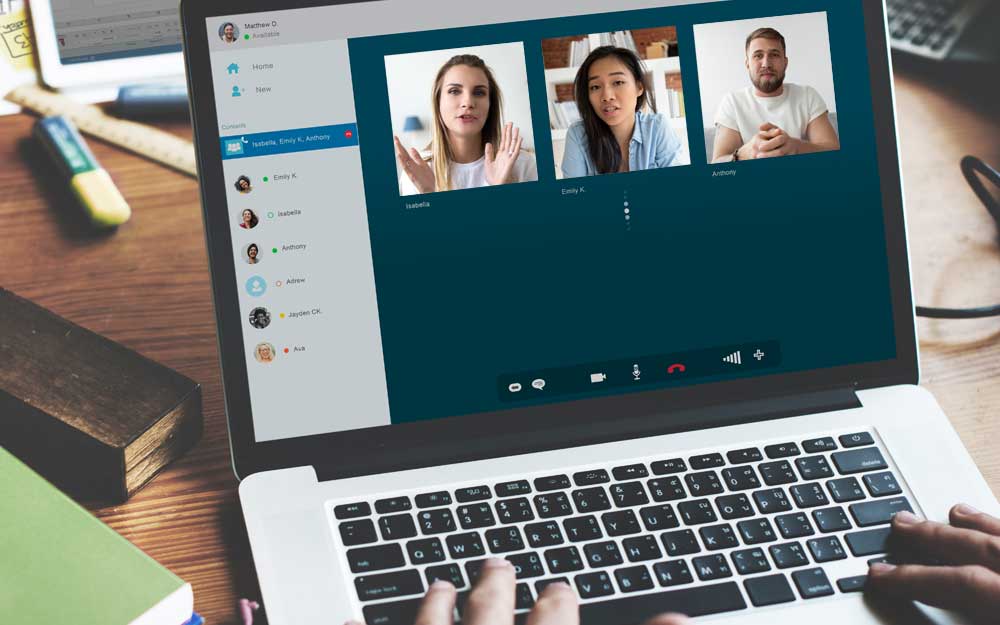Throughout COVID-19, there’s a heightened need for mental health and addiction care. In response, Rogers Behavioral Health began serving patients virtually across the country through Rogers Connect Care — a telehealth treatment option for people who would benefit from specialized partial hospitalization or intensive outpatient levels of care.
Researchers at Rogers Research Center investigated whether virtual treatment during the pandemic had the same effectiveness in reducing symptoms as treatment delivered in-person, pre-pandemic.
Comparing OCD symptom reduction in telehealth treatment and in-person care
The first of two published studies focused on obsessive-compulsive disorder (OCD).
“We took a sample of 234 adults from the pandemic telehealth group and matched that against 234 adults from the in-person, pre-pandemic group,” says Caitlin Pinciotti, PhD, associate research psychologist and licensed clinical psychologist.
“We matched the groups for things like age, severity of symptoms, gender identity, sex, age, and level of care,” explains Nyssa Bulkes, PhD, data scientist. “We do our best to minimize differences we can control, while acknowledging there are variables such as upbringing that may have some impact on the results,” adds Bulkes.
The researchers compared results from patients who had received partial hospitalization care (PHP) and intensive outpatient care (IOP) pre-pandemic to results of those who received the same level of care via telehealth between July 2020 and March 2021.
“Considering the limited evidence supporting telehealth for higher levels of care, combined with concerns about the inherent treatment challenges associated with the pandemic, it was critical to investigate whether patients who received treatment virtually experienced the same reduction in symptoms as patients who had received in-person care before the pandemic,” explains Dr. Pinciotti.
The team found there were no differences in treatment response per the Yale-Brown Obsessive Compulsive Scale, a measure of severity of OCD symptoms.
“We looked at the severity of symptoms when patients started treatment, their assessments during treatment, and at discharge,” says Dr. Pinciotti. “People who received virtual treatment during the pandemic, whether in PHP or IOP, were in lockstep with patients who had received in-person care pre-pandemic in terms of the decrease in symptoms they were experiencing. However, patients who received telehealth treatment required an additional 2.6 treatment days, which could be attributed to getting used to the telehealth format or technological issues,” she says.
The results are good news for people who may be leery of telehealth treatment and are waiting for the pandemic to be over to seek the help they need.
“Our study shows telehealth can be delivered effectively for higher levels of care like PHP and IOP, and knowing it works is important because it helps us reach people who otherwise wouldn’t get treatment at a Rogers outpatient clinic,” says Dr. Pinciotti.
“Efficacy of intensive CBT telehealth for obsessive-compulsive disorder during the COVID-19 pandemic” was featured in the January issue of Obsessive-Compulsive and Related Disorders.
Bulkes says the Rogers research team is in the final stages of a similar study for children ages 5 to 17 who received treatment for OCD.
Telehealth results for partial hospitalization care
The second published study investigated the results of telehealth for patients receiving therapy during the pandemic for addiction, OCD, anxiety, eating disorders, depression, other mood disorders, and trauma recovery (PTSD).
“Comparing nearly 1,200 patients who received care in-person pre-pandemic, with 1,200 patients who received treatment via telehealth during the pandemic, using the same matching technique, we found both groups responded equally to treatment,” says Bulkes. “The only difference is patients receiving telehealth required 2.8 additional days of care,” she says.
“Comparing efficacy of telehealth to in-person mental health care in intensive-treatment-seeking adults” appeared in the January issue of the Journal of Psychiatric Research.
“Because of Rogers’ ongoing commitment to measurement-based care and our vast data set of historical patient outcomes, we were uniquely positioned to conduct this study,” says Kelly Piacsek, PhD, vice president of Research. “Although there has been prior research to study the effectiveness of remote mental health treatment, our ability to look at real-world outcomes across multiple service lines and levels of care will help inform the behavioral health field of the merits of telehealth and will also assist us in continuing to improve our telehealth protocols,” she adds.
How Rogers can help
If you or a loved one is struggling, Rogers offers compassionate, evidence-based care for children, teen, and adults nationwide. You can call 800-767-4411 for a free, confidential screening for treatment in Brown Deer, West Allis, or Oconomowoc, Wisconsin, or 888-927-2203 for treatment at one of our other locations. You can also request a confidential screening online.
If you do not feel you need treatment right away, but may be concerned, we offer online quizzes to possibly provide some relief. While these quizzes do not provide a diagnosis, it could be the first step in finding the treatment you may need. Take one of our online quizzes:


